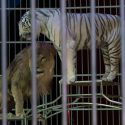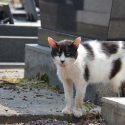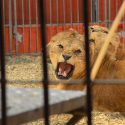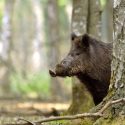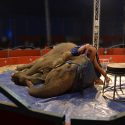Emergency in Norway: a death sentence for half of the wolves!
Emergency in Norway: a death sentence for half of the wolves!
23.10.2018
Norvege
Emergency in Norway: a death sentence for half of the wolves!
Wildlife
The lupine population is dying in Norway. Already small and fragile, it is about to be halved in the coming months. The authorities want to allow the slaughter of 43 individuals! The association NOAH – for dyrs rettighete fights against this massacre. Let’s unite to express our indignation to the politicians of this country!
It is not only in France that wolves are persecuted and subjects of heated debate or political pressure. In Norway, too, there is a regular struggle between supporters of their protection and the followers of their elimination.
Suspension of the population
However, this wild canine population is extremely fragile in this country. It is even critically endangered and theoretically protected since 1973. Today, there are about 80 individuals, permanently threatened by problems of consanguinity and poachers. Because, the packs are asked not to roam! The authorities have established a « wolf zone », representing only 5% of their territory, where the animals are supposed to remain concentrated. Woe betide those who do not have the pass in their pocket and who are pawing at the limits of the space defined by humans! And too bad if it is about a few wolves leaving or coming from neighbouring Sweden that could have favoured the genetic mixing of a Scandinavian population worthy of the name…
Slaughter policy
To these constant dangers are added political choices and official slaughter permits. Thus, last year already, 31 wolves were killed with the blessing of the leaders. And at the beginning of autumn, the massacre looks worse! Despite protests and letters sent to the government and politicians last winter, regional Wildlife Management Councils have decided to allow the shooting of 43 other wolves in Norway, including inside the « wolf zone » where these large carnivores are supposed to be better protected than in the rest of the country!
Let’s prevent this massacre!
The Minister of Climate and Environment has already given the green light to kill 26 wolves outside the famous zone, but he has not yet confirmed the extermination of three packs (17 animals in total) who live inside. If it validates this resolution of the Regional Wildlife Management Councils, it will sign the demise of half of this alraedy small population of Norwegian wolves! It is time to act, but quickly, to prevent this tragedy! The association NOAH – for dyrs rettighete needs help now, like yesterday, to ask the Norwegian Prime Minister and the Minister of Climate and Environment to reconsider their decision to kill 26 individuals and to confirm that they won’t be executing the 3 packs inside the « Wolf area ». We must send them as many letters as possible! We invite you to send by mail or e-mail (faster and more efficient) a courteous message – to the Prime Minister and the Minister of Climate and Environment of Norway. We rely on your precious voices. The more they will be, the more likely they will be heard and save the lives of these wolves!
Mrs Erna Solberg
The Prime Minister
Postboks 8001 Dep.
0030 Oslo
Norvège
Mr Ola Elvestuen
Minister of Climate and Environment
Postboks 8013 Dep
0030 Oslo
Norvège

